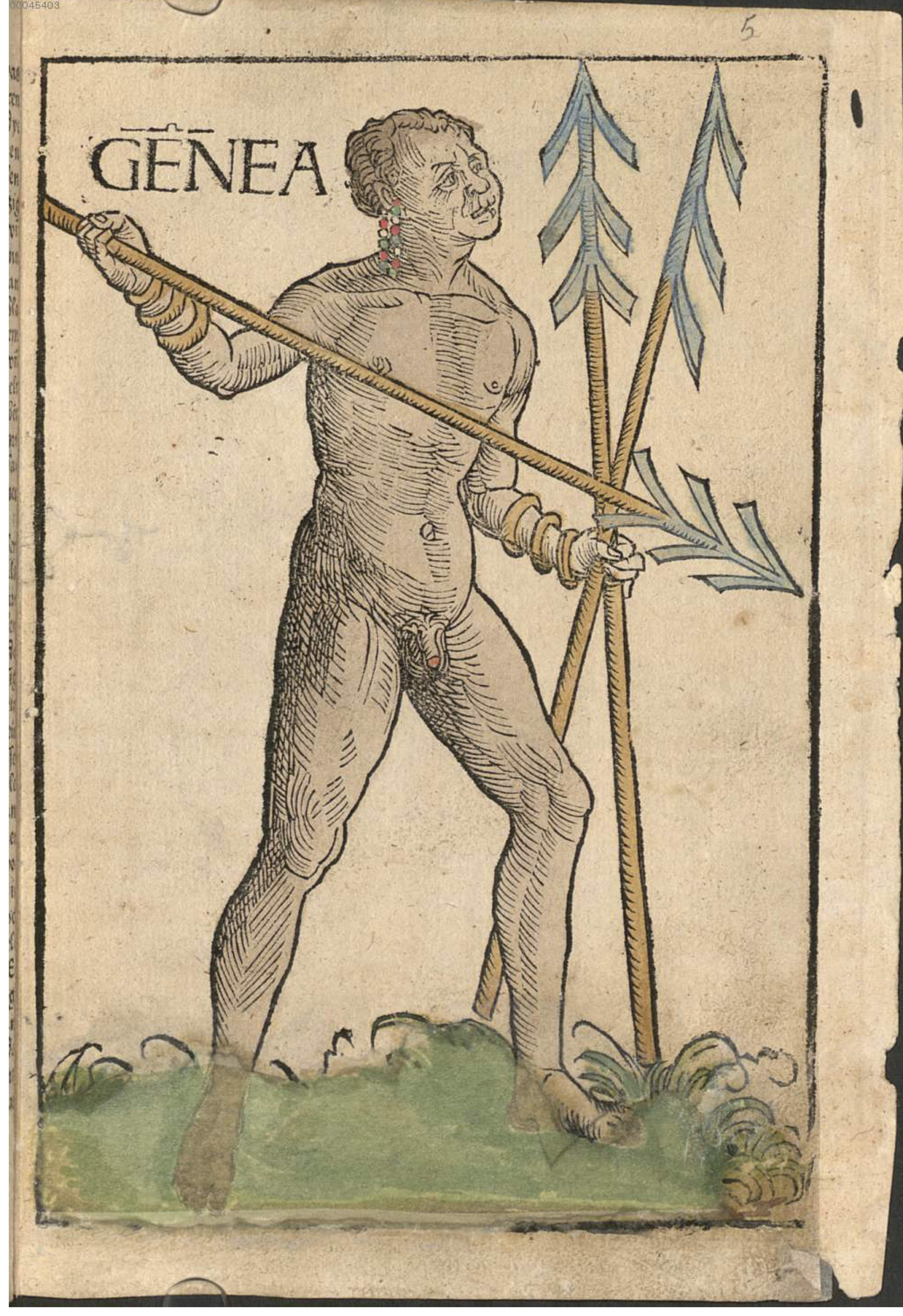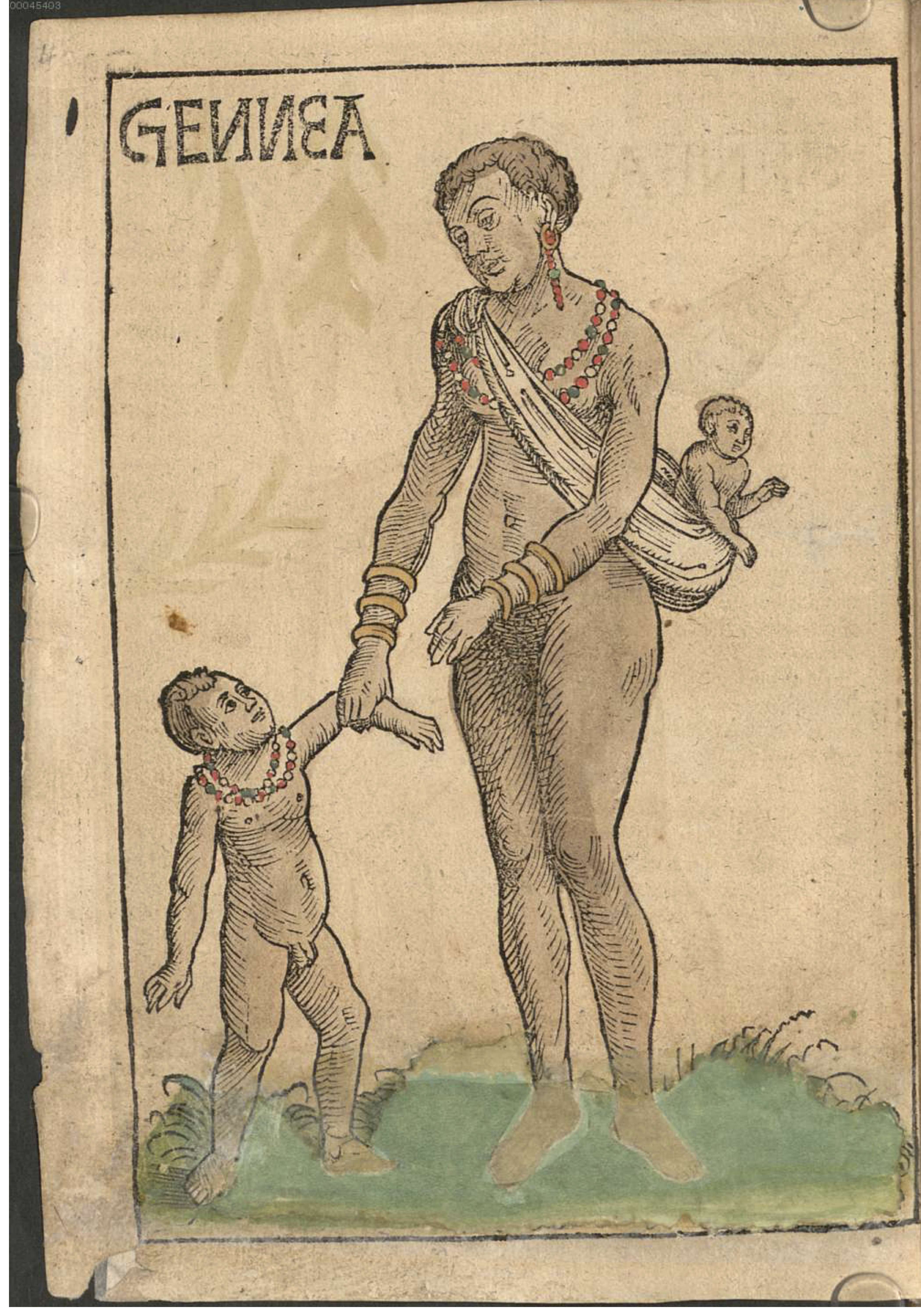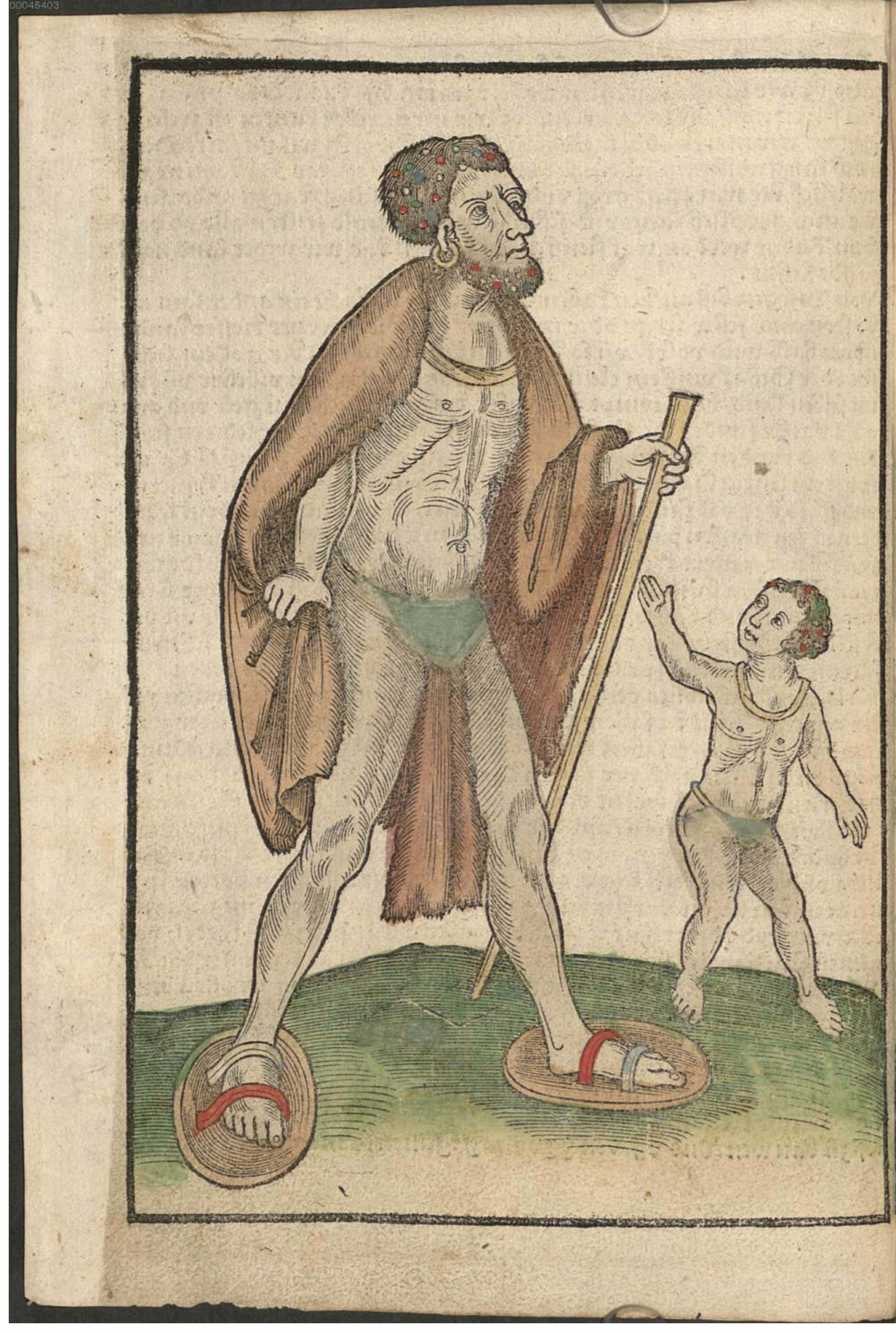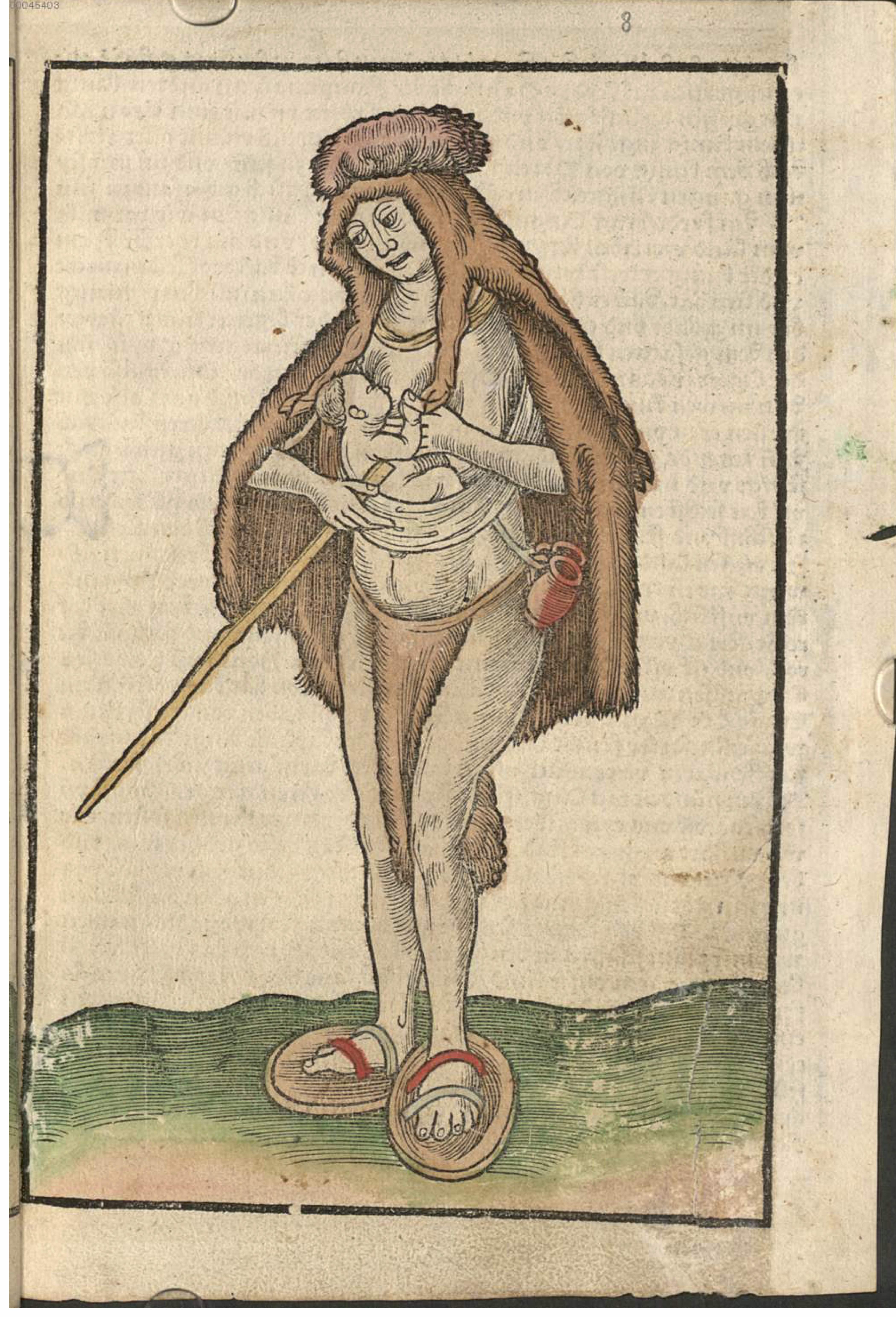Balthasar Springer (also Sprenger) took part in one of the earliest circumnavigations of Africa, sailing to India with a Portuguese fleet only a few years after Vasco da Gama first made the trip. A born Tiroler, he was a representative of an Augsburg trading house and in this role received a commission from the Portuguese King Manuel I to carry out a trading mission into the Indian Ocean. In 1505-1506 he visited numerous cities in East Africa and India and became famous for publishing his travel diary in 1509. Through this mission and his travel diary, Springer shows two means by which Central Europeans took part materially and virtually as Europeans engaged in global trade and conquest.
Springer’s travel report was one of the first in German to describe such distant lands. His detailed ethnographic descriptions, supplemented by high-quality woodcut illustrations by the well-known artist Hans Burgkmair, offered new observational details about lands that were otherwise shrouded in the mists of legend and fantasy [LINK]. The direct encounter with strange peoples and customs, many of whom impressed travelers with their sophistication while others with their apparent barbarity, occasioned far-reaching discussions over the definition of “civilization” and Christian Europe’s place in the world.
Jeff Bowersox
deutsch




Source: Balthasar Springer, Die Merfart vn erfarung nüwer Schiffung vnd Wege zu viln onerkanten Jnseln vnd Künigreichen von dem großmechtigen Portugalische Kunig Emanuel Erforscht funden bestritten vnnd Jngenomen (Oppenheim, 1509), Bayerische Staatsbibliothek VD16 S 8379.

An ethnographic view of Guinea (1509) by Jeff Bowersox is licensed under a Creative Commons Attribution-ShareAlike 4.0 International License. Permissions beyond the scope of this license may be available at https://blackcentraleurope.com/who-we-are/.